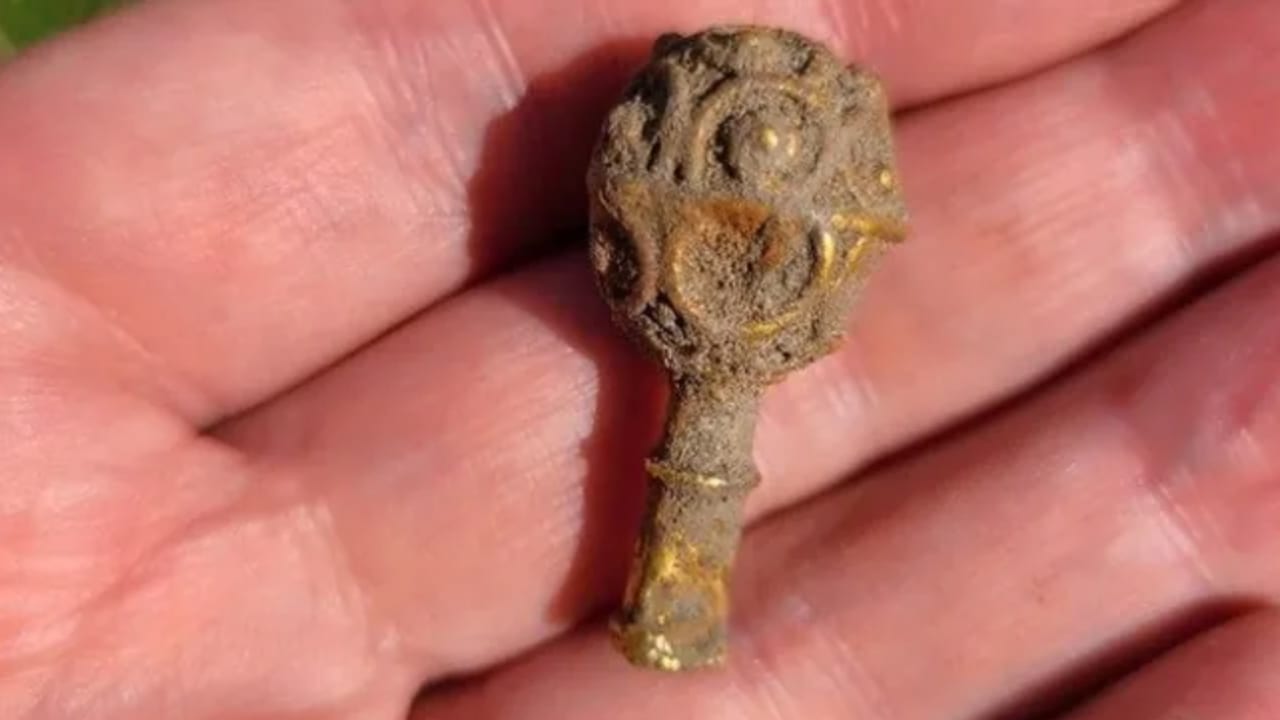By JERUSALEM POST STAFF
The wall paintings feature Grotesque-style decorations, including animal heads swirling into clouds, hares trotting, and sneering human profiles arranged in decorative panels.
Rare 16th-century Tudor wall paintings have been uncovered during renovations at The Ashes, a historic hunting lodge in Cumbria.
Owners Jen and Richard Arkell stumbled upon the intricate wall paintings while removing old plaster. "Removing old failing plaster to find these remarkable motifs and faces looking back at us is a moment we will never forget," they said, according to BBC News. The artwork, hidden beneath layers of plaster for centuries, revealed "fantastical beasts and foliage" that point to the building's storied history dating back to the Tudor era.
Historic England recognized that the wall paintings warranted extra heritage protection, which has now been granted by the Department for Culture, Media and Sport. "The combination of motifs is unusual even by national standards," said Myra Tolan-Smith of Historic England, according to The Guardian.
The Ashes, already a Grade II* listed building, received additional recognition to ensure the preservation of the newly discovered artworks. Adjoining agricultural buildings and boundary walls have also been granted Grade II listing, securing their future. The enhanced protection reflects the historical and cultural value of the site and its features.
Further exploration of the property revealed more about the paintings' composition and origins. Upon removing sections of more recent plaster work, the Arkells uncovered a larger expanse of the 450-year-old images than previously known. The wall paintings feature Grotesque-style decorations, including animal heads swirling into clouds, hares trotting, and sneering human profiles arranged in decorative panels. Specialist conservator Andrea Kirkham, who has 40 years of experience with Tudor wall paintings, assisted with the restoration. "It is fantastic because you are uncovering a painting that has not been seen for centuries. It is tangible evidence of the people who lived in the house in the 16th century," said Kirkham, according to The Guardian.
The paintings were created using a secco technique, known as fresco secco, where pigments are applied to dry plaster. This method results in more muted colors but retains a folksy authenticity. While the subjects of the paintings are typically associated with hunting, their strange arrangements and Grotesque ornamentation suggest they were intended for the amusement and entertainment of the lodge's guests.
Recent dendrochronological dating established that the earliest parts of The Ashes date back to the winter of 1561-62. This places the construction of the lodge during the early years of the reign of Elizabeth I, who ruled England between 1558 and 1603. The black and white paintings most likely date from this period, indicating they could not have been created before then.
The lodge first appears in historical records as part of the 1592 will and inventory of William Simpson, the bailiff of nearby Castle Sowerby, according to Historic England. It is believed that the Simpsons may have been the first residents of The Ashes and likely commissioned the paintings to decorate their home. The artworks provide valuable insight into the interior design tastes of affluent Tudors, reflecting how individuals with disposable incomes decorated their homes during that time.
"They are social history," Kirkham explained. "They tell us an awful lot about people's tastes, attitudes, their ideologies, the way they use colour or the way they use materials, the designs they choose. They tell us about their interests and how they wish to be seen by others." These sentiments underscore the importance of the discovery, offering a vivid glimpse into the Tudor past.
"This discovery provides remarkable insight into the evolution of a significant Tudor hunting lodge into a working farm," said Tolan-Smith, according to The Guardian. The newly listed farm buildings enhance this understanding, illustrating the development and use of the site over time.
Local MP Markus Campbell-Savours expressed his enthusiasm for the find. "It's quite clear these paintings were a remarkable find and it's wonderful news that they have now been protected as part of the building's listing," he told BBC News. He also conveyed hope that local people can enjoy the history of Cumbria for many years to come.
The rarity of such a discovery in Cumbria makes it nationally important. "It is a very unusual survival in Cumbria," Kirkham noted. The paintings not only enrich the historical tapestry of the region but also add to the collective understanding of Tudor art and culture in England.










.jpg)










